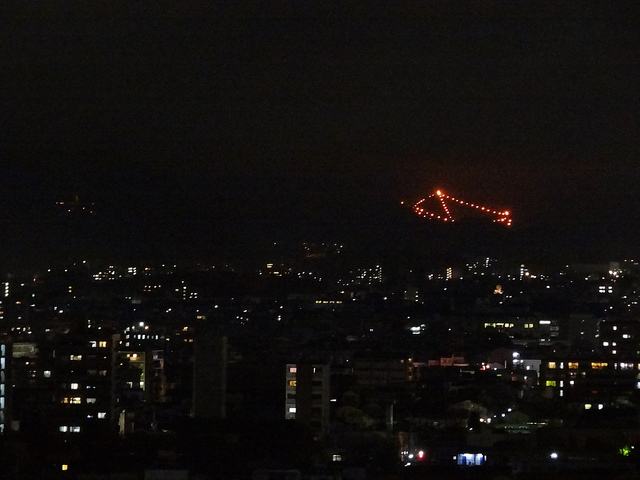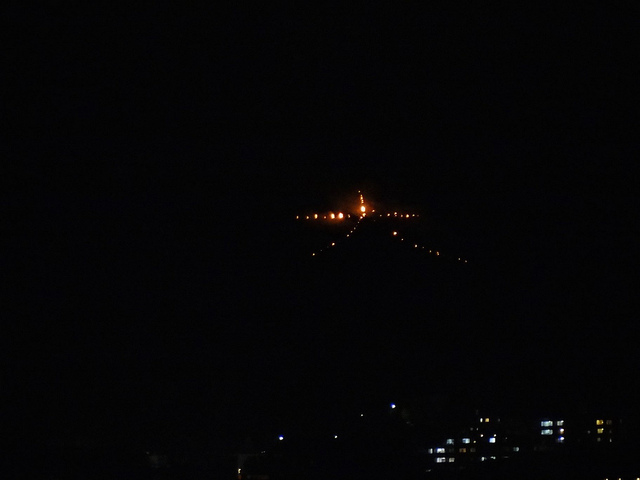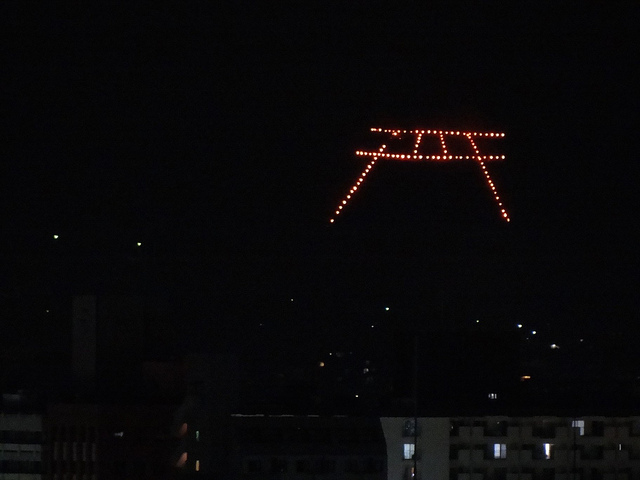 is for yama, or the Japanese word for Mountains. Ever since I was little, I’ve always lived in nature. But nature for me was rivers and forests, not the sprawling, towering landscapes of Japan. There’s not much flat area here. Peppered even in the middle of rice fields, small hills bubble up from the depths of Earth to offer a unique, and mostly uninhabitable topography for Japan. A majority of Japan’s landmass is so tightly packed with mountains or volcano that cities become little pockets of civilization amidst the deep greens of the wild.
is for yama, or the Japanese word for Mountains. Ever since I was little, I’ve always lived in nature. But nature for me was rivers and forests, not the sprawling, towering landscapes of Japan. There’s not much flat area here. Peppered even in the middle of rice fields, small hills bubble up from the depths of Earth to offer a unique, and mostly uninhabitable topography for Japan. A majority of Japan’s landmass is so tightly packed with mountains or volcano that cities become little pockets of civilization amidst the deep greens of the wild.
There are two mountains in Kyoto that are famous, but they aren’t very tall. You can scale them in a day, and they’re not as grand in form as some of the mountains I saw while in Vancouver. I live right between them. Mt. Hiei, the North-eastern mountain, is one of the most well-known mountains in Japan, perhaps only second to Mt. Fuji. It is rumored to be the origin of Buddhism in Japan, as most of the teachers from the different sects of Buddhism started their lives as monks there. There are some who even claim it is the origin of the world famous motif of three monkeys: iwazaru, kikazaru, mizaru or Speak No Evil, Hear No Evil, See No Evil (though this is highly debated and likely false.)
Images hosted on Flickr.
Mt. Hiei straddles the northeastern borders of Kyoto city proper and Shiga prefecture. It has an elevation of roughly 2800ft and is home to Tendai Buddhism’s headquarters, Enryaku-ji, as well as a large garden museum. It can be accessed by cable car, ropeway and toll road. The mountain is bathed in the scent of cedar and incense, and in Shinto lore, is the home of the Mountain King Sanno, who represents three Buddhas, who in turn represent three of Shinto’s most important deities. The avatar of Sanno is the monkey, and due to the Tendai sect’s belief in the power of ‘3’, it is believed the Three Monkey motif originated here. However, further research suggests that the actual origin may be Tōshō-gū in Nikko, Tochigi Prefecture, in the Kanto area.
Back in the Heian period, there was great faith put into Chinese geomancy, and people believed that Kyoto was particularly vulnerable to evil influences from the northeast. Thus, the monkeys, which are also believed to chase demons away, provided protection to the city. There are, in fact, actual wild monkeys in most of Kyoto’s mountain wood, including on Mt. Hiei.
The Sohei Monks, or “Warrior Monks” of Mt. Hiei were also an important part of the spread of Buddhism in Japan and also the violent disputes between the differing sects in the Kamakura Period. They both caused fires and were the victim of retribution attacks many times over.
These days, there are no more warrior monks, but on Mt. Hiei, there are still the kaihogyo, or Marathon Monks. These monks are part of the Tendai School and do special marathon training, a form of extreme asceticism. It is a strict practice, and in the past, the price of failure was to take one’s own life. The mountain is littered with the graves of some of these marathon monks who failed to complete the 7-year, 1,000 day course. Since 1585, only 46 monks have completed it. Amazingly, the most recent participant, Yusai Sakai (born in 1926) has completed the circuit twice, the second time at the age of 60!
The other famous set of mountains are five mountains (and hills, if we’re honest!) that are permanently marked with kanji characters on their faces. These mountains are lit up during Gozan no Okuribi, a fire festival during Obon, or Japan’s “Day of the Dead”.
Gozan no Okuribi is an ancient tradition in Kyoto that celebrates the Obon Matsuri, a festival during which it is believed that the spirits of dead family members return to the world to visit the world of the living. The end of the festival is on August 16th, when it is said the spirits return to the world of the afterlife, and the fires that are lit along the mountains of Kyoto are said to be the guideposts to lead them back.
[大]
The first bonfire to be lit is called “Daimonji,” and as it is the most recognizable character , it is also the most famous. “Dai” means “great” or “large” and can be associated with the festival’s “large” send-off fires.

[妙・法]
The second set of fires to be lit are the Myo-Ho kanji compounds, which mean “Wondrous Dharma” and can only be seen at the same time from specific points in the city. The “Myo” of Myo-Ho is quite close to my work, while Ho is the fire pictured above.

[舟形]
Funagata “ship-shape” is the third mountain to be lit, though it isn’t an actual kanji scrawled into the earth; rather, it is a simplistic drawing of a boat, and considered the ferry that takes the souls from the first and second signal fires, to the final mountain, The Gate.

[左大文字]
Hidari Daimonji, “The Left Large Fire” is the fourth mountain, but is also known as the “Little Dai” as it mirrors the image of the first signal fire, despite being smaller. When people say Daimonji, they without a doubt mean the more eastern of the two.

[鳥居形]
Torrigata is the fifth mountain, the “Shape of a Tori Gate”, and the final destination for the spirits that are being ferried back to the spirit world. Once again, this mountain is not a kanji, but rather in the shape of a tori gate- the tall red arches made famous by Fushimi Inari Shrine.


Pictured above is a Google Map of the area. Okuribi is a very fun event, with the most popular mountain to go see being Daimonji. Most people go to the fork of the Kamo River for viewing the display, but it is my opinion that the other mountains are of equal splendor.





33 responses to “M is for 山”
I had to go back and re-read about the Marathon Monks. Only 46 in over 400 years! That’s a pretty exclusive membership and gives extreme a whole new meaning!
LikeLike
Wow! I love mountains, and definitely want to live in a place that has them. And I love the fire symbols in the dark! And also the concept behind them…
@TarkabarkaHolgy from
Multicolored Diary – Epics from A to Z
MopDog – 26 Ways to Die in Medieval Hungary
LikeLike
Lovely, as always, Alex. Interesting that “yama” in Bahamian means hurry!
LikeLiked by 1 person
Looks around … well we have a few hills 🙂 The scenery sounds and looks spectacular – I never realised how mountainous Japan was.
Tasha
Tasha’s Thinkings | Wittegen Press | FB3X (AC)
LikeLike
What a complex belief system! But a lovely way of celebrating it – I’d love to see those bonfires. We aren’t far from mountains either, the Highland line is about 40 minutes north from us.
LikeLiked by 1 person
*sigh* There are no mountains where I live. All seem to have been perfectly flattened during the last Ice Age. The tallest hill in the whole country is 311 meters high and I’m ashamed to say that I’ve never visited it.
LikeLike
That Marathon Monks is something I’ve never heard of. I’ll have to research that. It sounds like a possible story idea.
LikeLiked by 1 person
Loved the information you provided in that post. Those pictures are beautiful. I wish I could live between those mountains 🙂
LikeLiked by 1 person
Wow! Very fascinating post.
LikeLiked by 1 person
I’ve gotten to travel through some mountains, and while very curvy, it’s so beautiful. You can see for miles and you just have to stop and take pictures.
~Patricia Lynne aka Patricia Josephine~
Member of C. Lee’s Muffin Commando Squad
Story Dam
Patricia Lynne, Indie Author
LikeLiked by 1 person
Totally agree. I love mountainous areas. I can’t wait to explore the ones around Vancouver!
LikeLike
Marathon Monks!
What is a ropeway?
LikeLike
Ummm. Like a cable car? I guess I’m using Japanese English more than I thought!
LikeLike
but you said: cable car, ropeway and toll road
So that’s three ways? and if three ways, that what’s the difference between a cable car and ropeway?
LikeLike
Cable car uses a cable to move on its own, while the ropeway uses a moving cable to get up and down.
LikeLike
Oh. Okay. I think I understand.
LikeLike
This is a fantastic post. I loved the stories about the mountains 🙂
LikeLiked by 1 person
Less than 10 per century! That’s amazing!
I love the mountains, but, maybe, that’s because I don’t live in them.
LikeLiked by 1 person
Yeah, the course is pretty intense.
LikeLike
I thought I’d mis-read what you said about character images on the mountains until I saw the photos … how magnificent! Also, this sentence sounds like the start of a fairy tale or a beautiful fantasy novel/graphic novel: “A majority of Japan’s landmass is so tightly packed with mountains or volcano that cities become little pockets of civilization amidst the deep greens of the wild.” …little pockets of civilization amidst the deep greens of the wild … love!
LikeLiked by 1 person
Awww, thank you!
LikeLike
Beautiful photos, especially that first one.
I currently live in THE flattest place on Earth. (The Llano Estacado — it really is the flattest part of the planet.) I miss hills and mountains (and large trees) so much.
LikeLiked by 1 person
We drove through the Midwest once and almost got white line fever it was so flat. I don’t envy you!
LikeLiked by 1 person
Every single one of your posts this April have been fascinating. I’m hooked!
LikeLiked by 1 person
Really interesting post, Alex. thank you. anne stenhouse, novels now
LikeLike
Great post! Stop it, my list of places and festivals to visit is already to large! Seriously thanks for sharing.
LikeLiked by 1 person
XD I apologize! Though at least we’re halfway done now!
LikeLiked by 1 person
I didn’t know about the marathon monks. Now that’s dedication! My favourite bonfire in your pictures is the tori gate. What a beautiful idea for a ceremony. Fireworks just seem insignificant in comparison.
LikeLiked by 1 person
Yes, I like that one the most, too. It’s my last year to get a chance to see them (the ceremony is only about 20 minutes long, so you can only see one at a time up close, or all at a distance), so I may go to the Tori one this year. There’s supposed to be a pond nearby with lanterns as well.
LikeLiked by 1 person
When you mentioned a pond with lanterns, I suddenly thought of that scene in the movie Tangled with all of those lanterns floating up over the water. I love the shapes and styles of paper lanterns. Hope you enjoy the ceremony!
LikeLiked by 1 person
Yep! That’s probably where they got the inspiration. 😉 http://i224.photobucket.com/albums/dd233/NakeBenihime/ToroNagashilanterns3.png
LikeLiked by 1 person
Beautiful picture, thank you!
LikeLiked by 1 person
[…] (19 comments vs. 17 last year) L is for 土地の人 (45 comments vs. 25 last year) M is for 山 (32 comments vs. 15 last year) N is for 夏 (50 comments vs. 26 last year) O is for 温泉 (48 […]
LikeLike